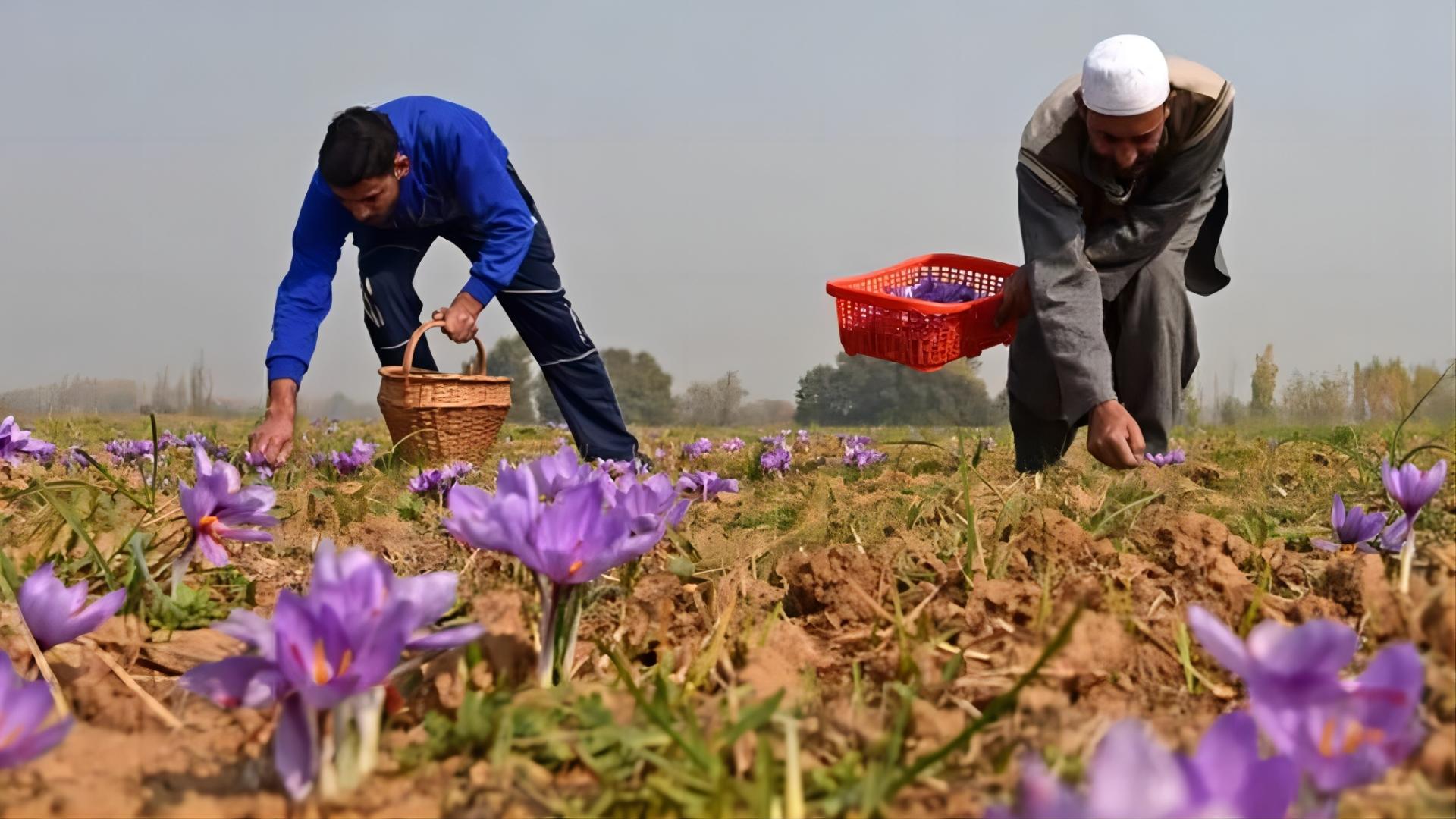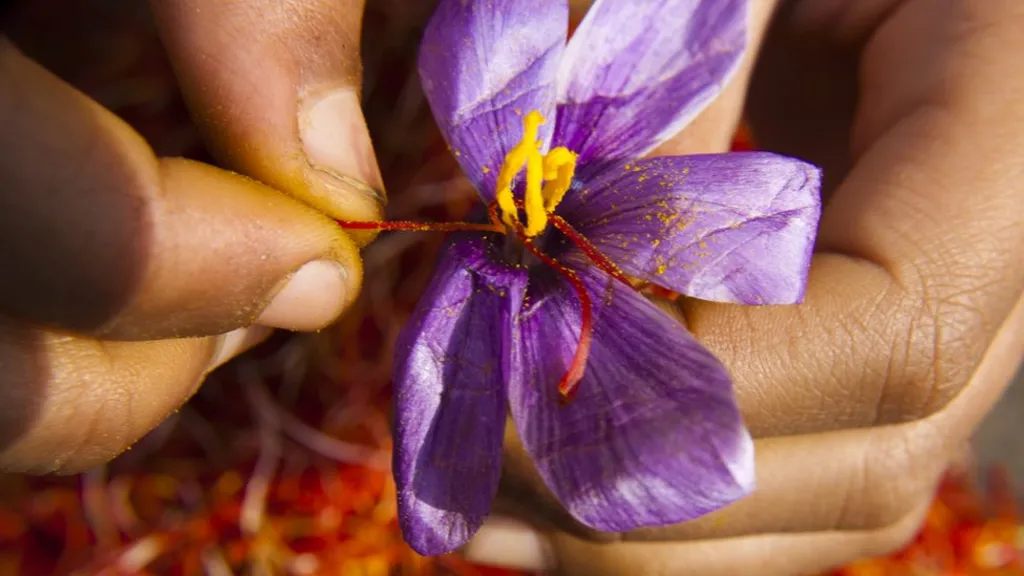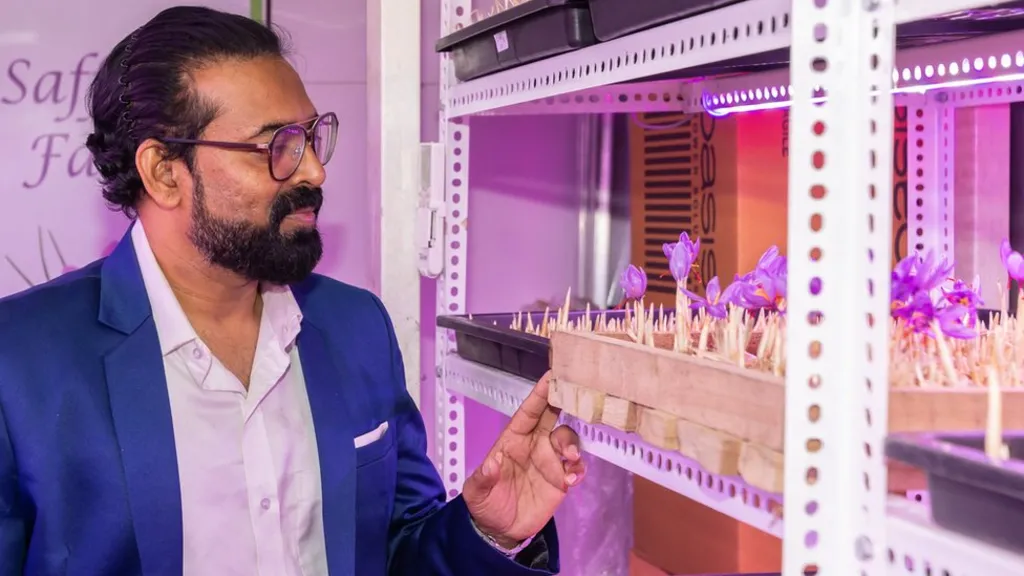
Beneath dramatic snow-capped mountains in Indian-administered Kashmir lies the town of Pampore.
As well as a spectacular location, Pampore is India’s centre for saffron – a spice so valuable that it is sometimes called red gold.
Derived from the crocus plant, saffron fetches around $1,500 (£1,200) per kilo.
In October and November fields around the town turn purple as the crocus plants bloom.
Autumn also sees the intricate work of harvesting, when the deep-red threads, called stigma, are removed from between the crocus petals and dried to form saffron.
Around 90% of India’s saffron production comes from Kashmir, where it has been grown for centuries.
Monis Mir is the fourth generation of his family to be involved in the saffron business.
He says that it can take between 200,000 and 300,000 flowers to produce just 1kg of saffron. It all starts with the planting of corms, which look like bulbs.

“It is a highly labour-intensive industry where each process, from planting the corms, plucking the flowers, gently removing the red stigmas from the flowers, to the final grading, is meticulously carried out by skilled workers with decades of experience in the trade,” he explains.
Mr Mir says his fields have become less productive over the years. He can remember a time when the crocus would flower three to five times in a growing season, now that’s down to two or three.
He blames more erratic patterns of rainfall and higher temperatures, which leaves the soil too dry for the sensitive crocus plant.
Scientist who have studied saffron cultivation agree that conditions have become more difficult.
“Climate change is a reality, creating havoc for saffron fields,” says Dr Bashir Allie, who heads the Saffron Research Station, at Sher-e-Kashmir University of Agricultural Sciences and Technology.
“Rains and the snowfall have become erratic and uncertain. Fields which were very productive just 10 years back don’t produce much saffron now.”
The amount of land devoted to saffron production has dwindled in Indian-administered Kashmir. Around 5,700 hectares was given over to the crop in 1996, by 2020 that had fallen to 1,120.
As well as the changing weather patterns, Mr Mir blames the expansion of towns and villages onto saffron fields, and lack of investment in irrigation and training for farmers.
To revitalise the saffron farmers, Dr Allie is trying to breed hardier crocus plants.
He uses a technique called mutation breeding in which the DNA of the plants is disrupted by exposing seeds to radiation. The hope is that some of the resulting gene mutations will be useful and help the plants prosper in different climatic conditions.
The results have been “encouraging” says Dr Allie.

